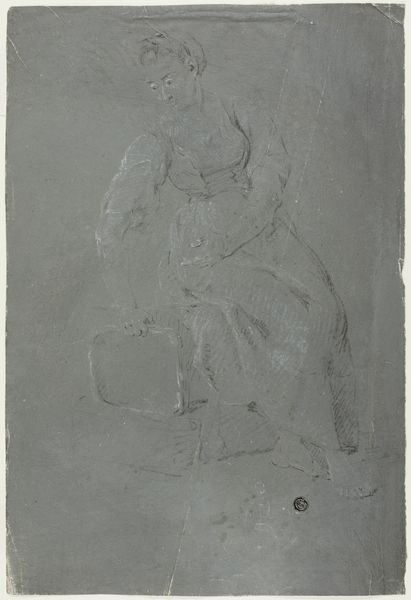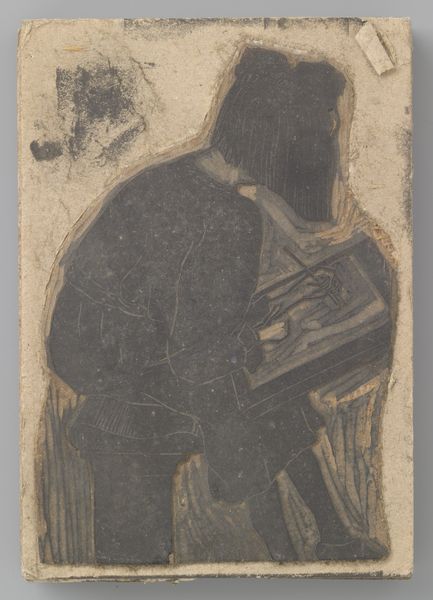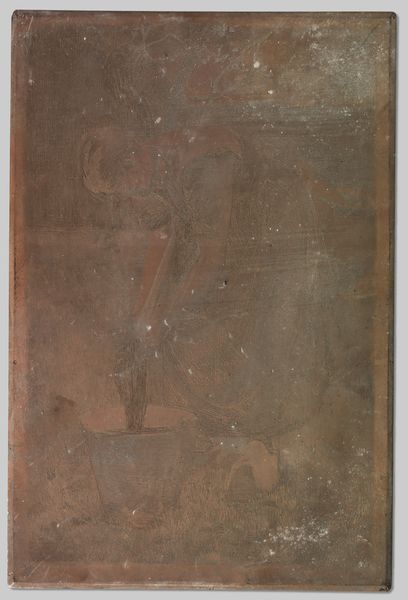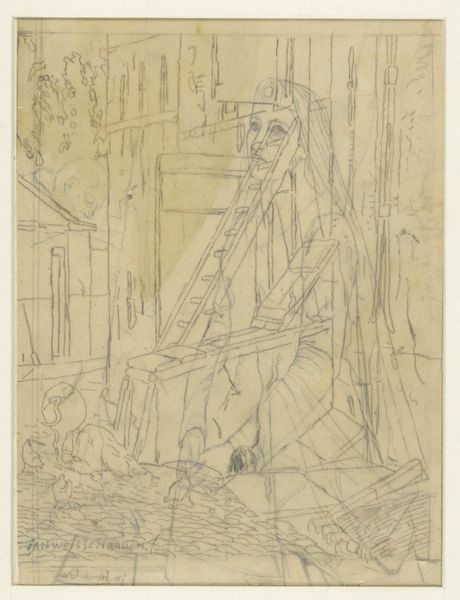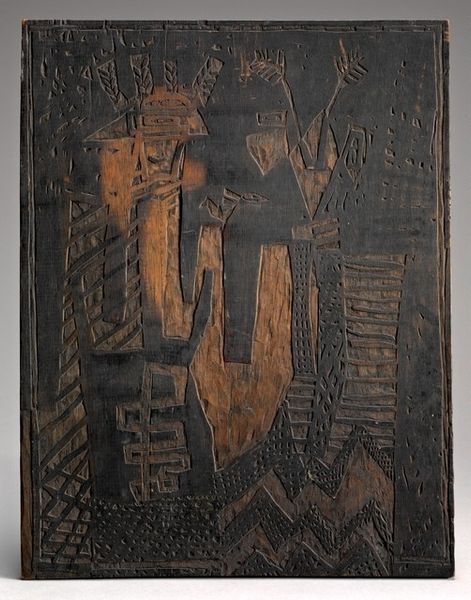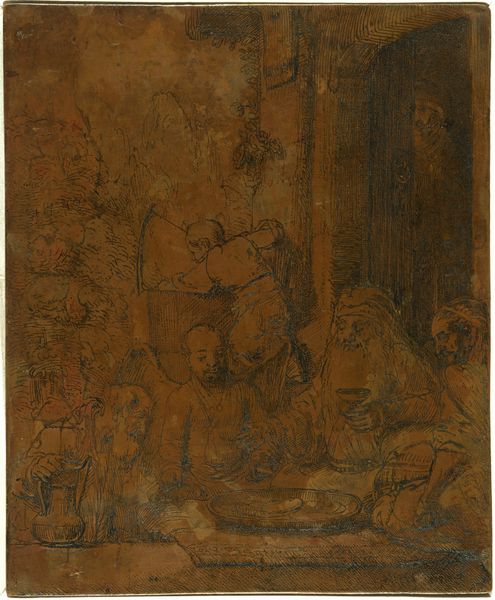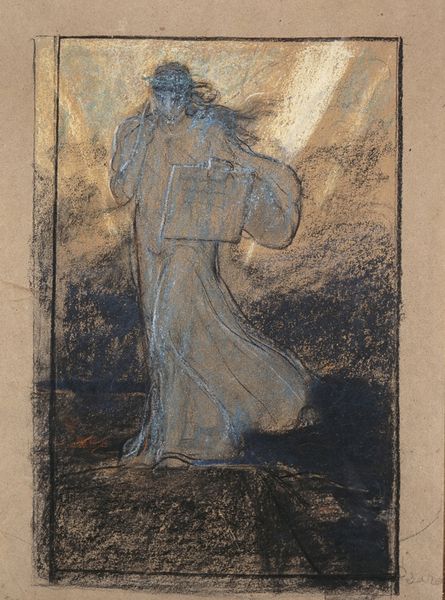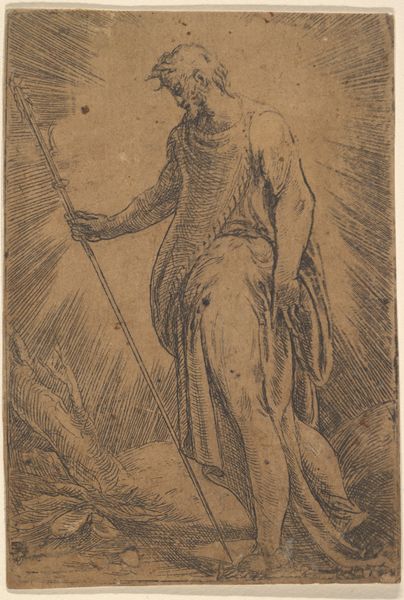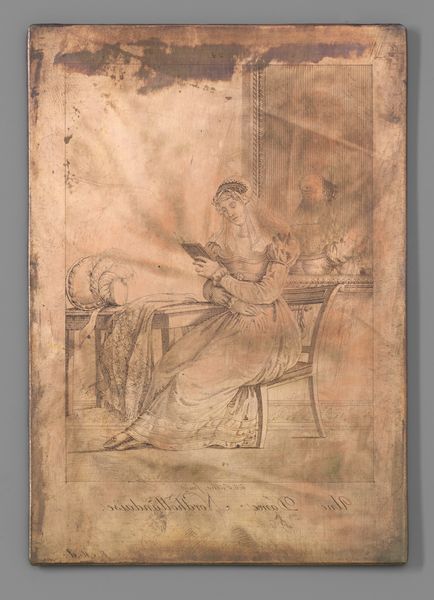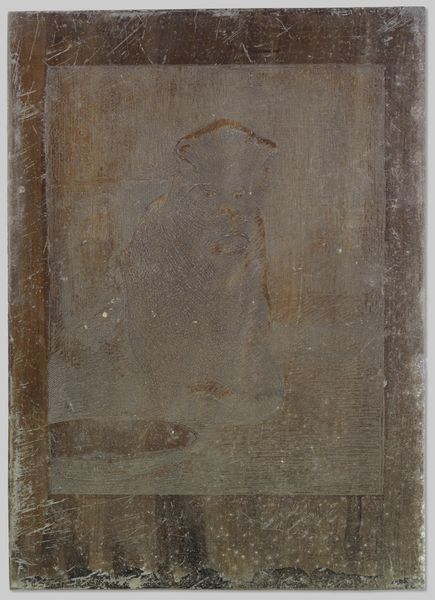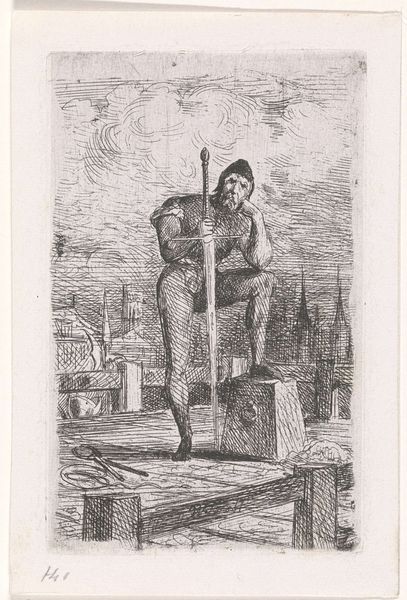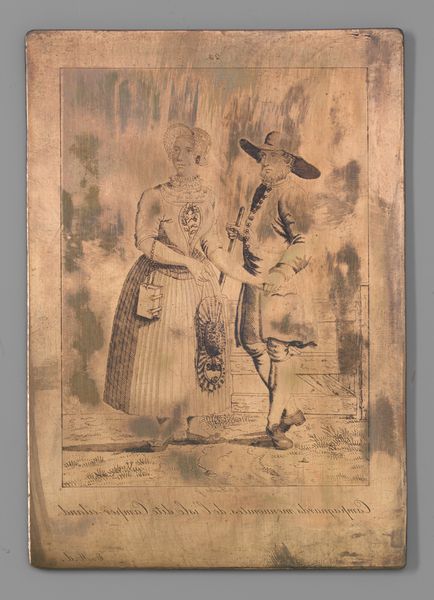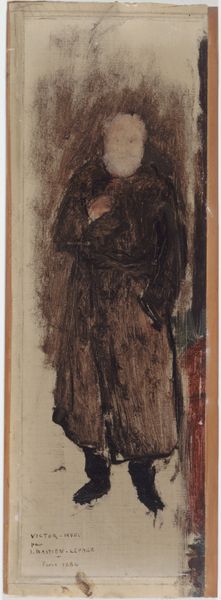
drawing, pencil
#
portrait
#
drawing
#
water colours
#
figuration
#
coloured pencil
#
pencil
#
cityscape
Dimensions: height 66 mm, width 105 mm
Copyright: Rijks Museum: Open Domain
Editor: This is "Man met groot zwaard, leunend op vierkant blok," or "Man with large sword, leaning on square block," attributed to W. Thomson, circa the 19th century. It looks like a pencil and watercolor drawing. I’m really struck by the contrast between the muscular figure and the delicate cityscape in the background; it feels almost like he’s guarding it. What do you make of this piece? Curator: It’s interesting how this work presents a tension between the individual and the collective. We have this powerful figure, almost a mythical watchman, positioned against a cityscape rendered with much more fragile lines. Think about the role of cities in the 19th century – these were sites of immense social and economic change, centers of both progress and alienation. Does the figure represent protection, or perhaps even a looming threat to the burgeoning urban landscape? Editor: I see what you mean. Is it possible that the sword is a symbol of that threat? It seems quite prominent. Curator: The sword, undoubtedly, adds a layer of complexity. Swords by this era weren't merely instruments of warfare; they had come to symbolize power, authority, even nostalgia for a bygone era. Now, consider who had access to such symbols of power. The image is really calling attention to institutional powers by juxtaposing it with images of urbanity. The cityscape in the backdrop hints at this transition of power from single actor, like the sword-holder, to collective actors residing in cityscapes. What feelings do you get from this? Editor: That’s a fascinating point about shifting power structures. I initially focused on the aesthetic qualities, but now I’m seeing a deeper commentary about societal transformation. The pose also looks staged - what was the artist trying to stage or convey with this character in this setting? Curator: Exactly! And this brings me to a last observation that's based around social context and performance, something that also ties into power. Perhaps the character symbolizes traditional authorities feeling threatened or struggling to maintain relevance in a changing society. A last important thought might be about public imagery, and how artists responded in that period of rising modernity. Editor: I hadn’t considered all the layers of socio-political meaning embedded in this image. Thanks for the insightful reading of this drawing. I’ll definitely look at art through a wider lens moving forward!
Comments
No comments
Be the first to comment and join the conversation on the ultimate creative platform.
